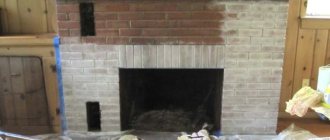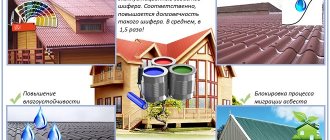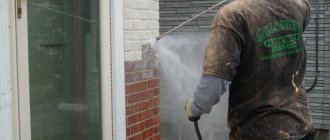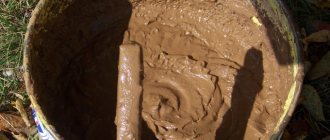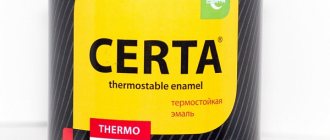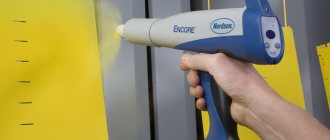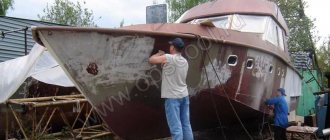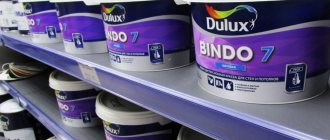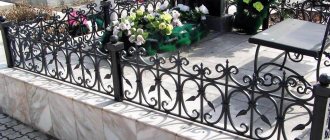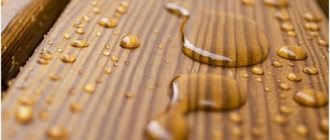What to paint with?
A large number of requirements are placed on the paint and varnish material, but the modern chemical industry successfully creates dozens of paints that are ideal for such tasks. Construction stores offer products from dozens of manufacturers, but they are all divided into several large categories.
- The optimal heat-resistant paint for metal stoves is water-based acrylic. It is actively used for painting steel, brass, copper and some other alloys. The price is quite affordable, and the performance characteristics are suitable for many customers. An important advantage is the possibility of use in rooms where the air is not humid enough.
- Polyurethane varnish or enamel is also an excellent paint for a heavily used iron stove. The material can easily withstand high temperatures, and the metal surface acquires a beautiful silver tint.
- The most modern product is heat-resistant silicone paint for metal furnaces, which is marked KO-8101, 822 or 8111. According to ongoing research, the material can withstand temperatures above 650 degrees, and the absence of toxic substances will preserve your health. An unpleasant feature is the rather high price, which is compensated by the high quality of the products.
Causes of wear and tear on chimneys
During prolonged exposure to high temperatures from 280 °C to 620 °C, the strength of materials decreases and they become less resistant to corrosion. The main reasons that lead to premature destruction of the chimney:
- new technologies aimed at protecting the environment, especially the “wet cleaning” system,
- too much air injection through the boiler-pipe system is also a negative factor,
- frequent or sudden changes in operating conditions,
- work with violation of design conditions,
- frequent change of fuel types.
Painting pipes is considered an effective protection against destruction. It is important to choose paint and varnish materials wisely in order to protect metal and reinforced concrete structures. It is necessary to take into account the operating conditions and surface features.
Choosing paint for the stove
The operating temperature for standard metal paint does not exceed 40-50 ℃, so you cannot paint surfaces that are too hot - it will bubble up, lose its original color and may begin to smoke and smell unpleasant. Therefore, in this case, you need to use only special heat-resistant paint for stoves.
Which of the proposed paint options to choose will depend on the area of its application. Thus, a metal sauna stove can heat up to 600-800 ℃ or more - at the epicenter of combustion the temperature is even higher. But its outer walls may not heat up so much - it all depends on the design. Therefore, you need to know how to properly install a stove in a bathhouse. If we are talking about a brick oven, then its surface does not warm up above 200 ℃.
Please note that heat-resistant paint must be suitable for interior use. And for sauna stoves you need paint with moisture protection.
Alkyd paints
Alkyd paints contain resins that are obtained from a mixture of alcohols and acids. Dyes, white spirit solvent, antiseptics, plasticizers, fillers that increase temperature resistance, and polymers that make the paint more plastic are added.
Alkyd paints do not lose their properties when heated to 150 °C. They are applied to radiators and heating pipes, and the surface of brick stoves. Metal stoves and boilers are painted if the outer walls do not come into contact with the flame. Used inside and outside buildings.
Properties of alkyd paints:
- suitable for indoor and outdoor use;
- are not afraid of moisture;
- dry in 8 – 24 hours;
- serve up to 10 years indoors;
- smell until dry, as they contain white spirit
- serve indoors for 5 - 7 years.
Alkyd enamel Tikkurila Miranol, 09 l - 700 rubles, online store "World of Colors". Withstands temperatures up to 120 °C. Consumption 100 – 120 ml/m2.
If metal powder is added to alkyd paint, its heat resistance increases. The price, however, too.
Aerosol paint MAXI COLOR, alkyd, heat-resistant, silver, 400 ml - 362 RUR, Customshop online store. Withstands temperatures up to 690 °C. Consumption - 80 ml/m2.
Alkyd thermal enamels come in a variety of colors. They are used when creating bright interiors.
Composition of fire-resistant dyes
The main difference between heat-resistant paints for metal and conventional ones is that fire-resistant paints contain pigments based on substances that are resistant to elevated temperatures.
Most of these dyes contain up to 50% titanium dioxide. Which has a melting point of +1855 degrees and, when added to the paint, reliably binds its components into a homogeneous mass, preventing it from igniting.
Ferrous oxide is added to the mixture, which is not subject to decomposition at high temperatures, and, like titanium oxide, allows the components in the composition to be more tightly bound. Heat-resistant paint contains chromium oxide, which increases its viscosity and color stability when exposed to high temperatures.
The listed elements are combined using a liquid base, which may consist of synthetic or organic non-flammable substances. This composition is used to treat metal surfaces that can be heated up to +1000 degrees.
If it is necessary to paint metal products that will not heat above +200 degrees, then in this case it is possible to use high-temperature paints based on epoxy resin.
Scope of application
High-temperature paint for metal is used for painting:
- heating radiators,
- internal combustion engine parts,
- stoves, boilers, fireplaces and various outdoor cooking equipment.
High temperature colors can be used in production. For example, in the production of drying chambers, roofing materials or machine tools, and at home during the independent construction of fireplaces or stoves.
Regardless of the scope of application of high-temperature paint, it is necessary to know exactly what criteria are used to select a high-temperature paint composition.
How to choose the right one
Only correctly selected paint will allow high-quality painting of a metal element that is operated at elevated temperatures.
To paint a solid fuel stove, it is also necessary to use fire-resistant dyes. If you ignore this rule, then with significant heating, ordinary paint will not only lose its aesthetic appearance, but can also cause a fire.
When painting parts of stoves and fireplaces, it is necessary to determine whether they are made of non-ferrous or ferrous metal. What type of surface the paint composition is intended for is usually indicated on the packaging, so you should study it very carefully when purchasing the product.
Video:
Silicone paints
Silicone paints contain silicon compounds that can withstand temperatures up to 500 °C. To increase heat resistance to 700 °C, zinc, aluminum powder or graphite are added to them. Paints with powder can withstand heating up to 700 °C, graphite paints - over 1000 °C. Available in cans and cans.
Properties of silicone paints:
- do not react to household acids, salts and alkalis;
- are not afraid of water;
- do not emit harmful substances;
- dry in 2 – 4 hours;
- serve up to 10 years.
Heat-resistant enamel P-818, red-brown, 0.4 kg - 708 rubles, Leroy Merlin hypermarket. Withstands temperatures up to 600 °C. Consumption 110 – 120 g/m2.
Anti-corrosion heat-resistant paint CERTA, 520 ml - 300 rubles, online store "YarmarkaStroy". Withstands temperatures up to 1000 °C. Consumption 180-200 g/m2.
Aerosol paint Rust-Oleum, black, 0.34 kg - 598 RUR, Leroy Merlin hypermarket. Withstands temperatures up to 1093 °C.
Silicone paints are used to paint the doors of stoves, boilers, barbecues, and fireplaces. They do not crack in frosts down to -60°C, and do not fade in bright sun.
Heat-resistant enamels in Moscow
Heat-resistant enamels and other products can be purchased at Leroy Merlin in Moscow at low prices. Select the product you are interested in on the website and buy it in our online store. The range of products presented in the catalog is extremely wide. Among them there will certainly be a position suitable in all respects.
All products presented in the “Heat-resistant enamels” section are produced by well-known companies that have proven themselves to be of high quality for their products.
You can always place an order and pay for it online on the official website of Leroy Merlin in Russia. For residents of the Moscow region, we not only have low prices for goods in the “Heat-resistant enamels” category, but also fast delivery to cities such as Moscow, Balashikha, Podolsk, Khimki, Korolev, Mytishchi, Lyubertsy, Krasnogorsk, Elektrostal, Kolomna, Odintsovo, Domodedovo , Serpukhov, Shchelkovo, Orekhovo-Zuevo, Ramenskoye, Dolgoprudny, Pushkino, Reutov, Sergiev Posad, Voskresensk, Lobnya, Ivanteevka, Dubna, Yegoryevsk, Chekhov, Dmitrov, Vidnoye, Stupino, Pavlovsky Posad, Naro-Fominsk, Fryazino, Lytkarino, Dzerzhinsky , Solnechnogorsk, Istra and Zhukovsky.
What properties should paint for stoves have?
The metal walls of the furnace become very hot when a fire burns inside it, and when heated, the metal expands. In addition to extremely high temperatures, other factors also have a destructive effect on it. These include water vapor, splashes of cold and hot water, and low temperatures. After all, a sauna stove is used periodically, and in winter frosts the metal cools down to sub-zero temperatures. It happens that during one day the metal heats up and cools down several times.
All this leads to the fact that the surface unprotected from the external environment rusts, the walls of the furnace gradually become thinner, burn out and it becomes unusable.
Burnt-out furnace wall Source sdelai-lestnicu.ru
Metal working in such difficult conditions requires reliable protection in the form of a paint coating that can withstand all harmful factors. Therefore, the question of how to paint an iron stove in a bathhouse is far from idle. The coating for it must have the following characteristics:
- heat resistance of at least 500-600 degrees;
- elasticity, the ability to expand without cracking;
- waterproof to prevent metal from coming into contact with water and water vapor;
- anti-corrosion properties.
Another important requirement concerns the protection not of the metal, but of the people in the bathhouse. If the paint contains toxic substances that are released into the air when heated, then the harm from bath procedures will be more than good. This means that special attention should be paid not only to its composition, but also to the presence of a safety certificate.
Use only certified compounds Source kraska.cbg.ru
Advice! The darker the coating, the higher the heat transfer of the iron stove. Therefore, as a non-mandatory requirement, but a recommendation on how to paint an iron stove, we can advise using paint in black, brown, bronze, gray and other dark shades.
Distinctive features
A special feature of heat-resistant paint is its ability to retain decorative qualities and physical characteristics when exposed to high temperatures. An example of the use of heat-resistant compounds is the painting of heating appliances, radiators, and stoves. When the temperature of water or air increases, the paint does not crack, does not form smudges, or rolls off. What matters is the final aesthetic appearance of objects if they are painted to create an attractive decor in the room.
Basic substances of heat-resistant compositions: coloring pigment and fixative base. In addition to reliable fixation, the paint exhibits anti-corrosion properties, prevents the surface from prematurely losing its original appearance and protects from moisture.
Heat-resistant paints and enamels for baths and saunas
The choice of coatings for metal stoves is not very large. Only varnishes, enamels and paints based on polyurethane or silicone have high heat resistance and other necessary properties.
- Compositions based on polyurethane resins can withstand a maximum temperature of no more than 600 degrees, and with strong heating they change color unpredictably.
It is better to use such enamels to paint the surfaces of heating radiators that are not very hot Source lux-term.ru
- Silicone enamels, made without the use of toxic components and withstanding higher temperatures, are more reliable and durable.
What to consider when purchasing
The characteristics of heat-resistant paint of different colors, even of the same brand and the same manufacturer, may differ. The base is the same, but the pigments used to impart color are different. They affect the properties of the compositions, and primarily their covering power and resistance to high temperatures. Therefore, before painting an iron stove in a bathhouse, so that it does not rust and remains in working condition for a long time, find out to what maximum temperature it heats up.
The most heat-resistant enamels are gray and silver. They add aluminum powder, which has a scaly structure and protects metals well from corrosion.
They are followed by compositions in black and all shades of brown, red, and green.
The heat resistance of paint depends on its color Source pk25.ru
The best brands
When choosing what to paint a metal stove in a bathhouse with, you can consider products from both foreign and domestic manufacturers. Moreover, our enamels are in no way inferior to imported ones in terms of heat resistance, hiding power, durability and durability. But these brands are deservedly considered leaders:
- Certa;
- Elcon;
- Kudo;
- Dali.
In addition to heat-resistant enamels, Cetra also offers patination compounds with the same properties, which can be used to decorate stoves and fireplaces, giving them an exclusive look.
How to quickly and easily paint a stove with Cetra brand products, watch in this video:
Among foreign brands the most popular are:
- Finnish Tikkurilla;
- English Hammerite and Bosnia;
- Lithuanian Hansa.
Enamels Kudo, Elkon, Cetra, Hansa, Bosni are produced not only in the usual liquid form, but also in aerosol cans. When choosing what to paint a stove in a bathhouse with, if it has a complex structure or is installed in an inconvenient place for painting, it is best to choose aerosol paints. Or use a compressor with a spray gun.
Note! There are suitable compositions on the market for metal structures from other manufacturers. Heat-resistant silicone enamels are marked KO followed by a series of numbers, the first of which should be 8.
Such compositions can withstand temperatures up to 800 degrees and above Source begeton.com
Acrylic paints
Acrylic thermal paints are made from synthetic resins to which water, dyes, antiseptics and modifiers are added to increase resistance to temperature. They do not change color and do not peel off at temperatures up to 100 - 120 °C. Suitable for painting radiators and heating pipes.
Properties of acrylic paints:
- do not smell;
- do not emit substances harmful to health;
- lay down in an even layer without gaps;
- dry in 2 - 24 hours;
- tinted in various colors;
- are not afraid of moisture;
- serve 10-15 years indoors.
Acrylic enamel "Prestige" for radiators, white, 1 kg - 229 rubles, online store "Order". Consumption 80-100 g/m2. Withstands temperatures up to 100 °C. Filler: metal powder.
Acrylic enamel Dulux Master Lux Aqua 40 for radiators and furniture, BW semi-gloss base, 1 l - RUB 1,081.25, Izolux hypermarket. Consumption 100 g/m2. Withstands temperatures up to 90 °C.
The price of acrylic paints largely depends on the brand. However, a high price does not guarantee good quality. Before buying paint, read reviews on craftsmen forums. It is also important to prepare the surface according to the instructions, otherwise even the best paint will fall off.
How to choose the right one
To choose the right paint for the stove, you need to carefully consider the label, which says what surface it can be used for, for example, heat-resistant paint for metal products. Often this information is printed in large font and is difficult to miss. In cases where the scope of application of paint and varnish products is wide, this is also written on the packaging, but in small print. Be that as it may, such information must be indicated on the packaging, as well as the name of the manufacturer. If this data is not available, there is no need to purchase such a product. It is possible that this is a counterfeit product that may pose a threat to your health.
For metal sauna stoves, use only moisture-resistant compounds, otherwise they will not last long on the surface.
Preparing the oven surface for painting
The process of preparing the stove for painting is simple and straightforward, but it must be carried out in full, otherwise the consequences will be dire. It is important that pure metal remains under the paint layer without any additional impurities.
The process looks like this:
- Thoroughly clean the surface with a wire brush.
- Remove remaining oxides with a solution of sulfuric acid with a concentration of 5%.
- Wash off the acid with a mixture of laundry soap.
- Degrease the metal surface using any available method - usually a solvent.
- Paint the surface with paint.
There is nothing complicated in the process itself, but you should pay attention to the details, since this is where mistakes are made. This process may not seem like a big deal, but if you don't do it, the paint will start to fall off soon enough!
The process of painting a metal stove is similar to similar work with other materials. Before starting work, make sure the quality of the paint - check the expiration date, the absence of lumps, additional impurities, etc. Mix the paint thoroughly, making movements not only in a circle, but also kneading the paint from the bottom.
It is necessary to paint a metal stove in an even, uniform layer. Pay attention to corners and seams, as these are the places where untreated surfaces most often remain. If you do not want to stain the surrounding area of the oven, then use cellophane and masking tape.
- You can use a brush to paint the stove.
- A can of spray paint is perfect for fittings.
Coloring stages
Before proceeding to the direct painting process, any stove (installed in a bathhouse or used as a stove) must be prepared - wash off dirt, grease, and remove traces of metal oxidation.
The painting procedure includes the following steps:
- Clean the surface of the oven using sandpaper or a stiff brush. This will allow the paint to adhere better.
- If rust is present, treat with a 5% sulfuric acid solution. When processing, you should protect your hands with gloves, and use a brush for application. Remaining acid should be washed off with a soap solution (50 g of laundry soap per liter of water). If there is no rust, you can skip this step.
- Apply a degreasing agent (solvent, white spirit) or simply wash the oven with soap and let it dry thoroughly.
- Heat-resistant paint is applied using a spray or brush. For greater stability, apply two or three layers, drying completely each time. It doesn’t matter what material the stove is made of, iron, steel or cast iron, the process is the same. Before working with the aerosol, shake the can for a minute, after which you proceed to spraying. The mixture to be painted is applied from a distance of 20-30 cm to make a thin layer.
How to coat
In order for enamel or paint to stick well and for a long time on the metal surface of the stove, it is not enough to choose the appropriate composition. It is necessary to strictly adhere to the technology when applying it. All the necessary information is on the packaging, but the principle is the same for any product.
Surface cleaning
Dust, dirt, rust, old coating and any other layers will not allow the paint to adhere well to the surface and adhere to it. They need to be removed.
- First, they use a metal brush to remove obvious contaminants and loose rust.
- Then the surface is brought to a shine with a drill with abrasive attachments or sandpaper.
Cleaning metal from rust Source yandex.net
For reference! If the instructions allow, instead of a mechanical cleaning method, you can use a chemical one by applying a rust converter to the surface.
- The next step is to remove dust using a soft broom or vacuum cleaner and damp wiping.
- The dried metal is degreased using a solvent recommended by the manufacturer. If there is no such recommendation, you can use white spirit or solvent P 646.
Solvent 646 does not cause metal corrosion Source artikaluga.ru
Painting
The coating is applied to the prepared surface immediately after it has dried, so that dust does not have time to settle on it. The painting method depends on the type of paint. If it is an aerosol can, it is advisable to cover all surfaces adjacent to the stove with a rag or film, and use a protective mask when working. Before starting staining, shake the can vigorously for 1-2 minutes.
Before painting a metal stove with regular paint, it must be thoroughly mixed and, if necessary, diluted with the product specified in the instructions. Other products may be incompatible with your paint and will ruin it.
Note! When painting with a spray gun, the paint is diluted to a more liquid state and filtered through a cloth or fine sieve.
The dyeing process itself is standard.
- The coating is applied evenly, without gaps.
- Before applying the second layer, you need to allow time for the first to set.
- The second layer should overlap the previous one in the transverse direction.
Painting with a spray gun Source bget.ru
The instructions may also contain special recommendations. For example, some silicone enamels acquire the required strength only when heated, so the oven must be melted immediately after painting. Other compositions require several hours or even days to dry normally, during which time the oven cannot be used.
But almost all enamels emit an odor when heated during the first time after application. Therefore, it is recommended that a freshly painted stove be heated 2-3 times thoroughly so that all volatile substances evaporate.
While the paint is drying, it is advisable to protect the oven from moisture and dust, so it is better to do painting work indoors. If this is not possible, you should choose a cool day without precipitation or wind.
After painting, even homemade stoves look very decent Source 24aul.ru
If everything is done correctly, the coating will last no less than the warranty period stated by the manufacturer. It ranges from 3 to 15 years, and this parameter should also be taken into account when choosing enamel.
There are other ways to give a stove made of cast iron or ferrous metal a noble look. An example of such a transformation using a cheap folk method is shown in the video:
Sprays for high temperatures
- home
- Articles
- All about anti-corrosion sprays
In some cases, metal coating requires not only anti-corrosion protection, but also high resistance to elevated temperatures. For example, for equipment used in industry and exposed to heat, or for some parts of a car that inevitably become hot during operation. Therefore, some sprays are specially created to be heat-resistant - with increased resistance to high temperatures.
Heat-resistant coatings for metal
Compositions that are highly resistant and resistant to thermal influences while maintaining their structure, appearance and functions are called heat-resistant. There are also heat-resistant and fire-resistant coatings, but they should not be confused with heat-resistant ones.
Heat-resistant ones are used, for example, for stoves, and exhibit resistance directly to fire, and not to high heating temperatures. Of course, they will most likely withstand high temperatures without fire, but they are still designed for other purposes.
Fire-resistant coatings also differ in structure and function - they are designed to protect the structure from fire in the event of a fire. As the temperature rises, they increase in thickness many times over, creating a reliable barrier to the flame. That is, they will not retain their appearance when heated, and besides, the equipment may simply stop functioning. Such coatings are used, for example, for the metal frames of a building, so that in the event of a fire they do not collapse as long as possible and have time to evacuate people or put out the fire.
If paints and coatings are not, in principle, intended for use at high temperatures, that is, they are not heat-resistant, then when heated, the coatings will crack, peel, and lose not only their appearance, but also all their protective qualities.
Where are heat-resistant coatings used?
Heat-resistant compounds, paints and enamels are used wherever heating of metals occurs or is likely: equipment, cars, stoves, radiators, heating system pipes, heating boilers and even barbecues.
Some heat-resistant paints are universal and can be used not only on metals, but also on other surfaces, such as stone or brick.
In mechanical engineering and automotive industry, heat-resistant paints are used to process:
- brakes,
- engines,
- mufflers and other parts.
In industry, such paints are used to protect:
- machine tools,
- jet engines,
- gas pipelines,
- metal fencing,
- and even the roof, since it can become very hot from ordinary sunlight during hot weather.
What are the requirements for heat-resistant coatings?
Of course, heat resistance in this case is the most important requirement, but not the only one.
Heat-resistant paints must have the following qualities:
- Carry out electrical insulation protection, compensating for the good conductivity of the protected metal.
- Be resistant to wear so as not to constantly apply coatings.
- Maintain all its qualities during sudden temperature changes, as well as when the temperature drops to negative.
- Be flexible so that the coating does not crack over time.
- Have good anti-corrosion protection.
- Give metals additional strength and form a durable coating.
- Do not pose a danger to human life and health - be environmentally friendly, do not release harmful substances into the atmosphere.
- Easy to apply.
- Have a high adhesion score.
- Resistant to various chemicals, vapors, salts, water, oils and gasoline.
| ! Pay special attention to the paint's resistance to chemicals, aggressive vapors and gases, oils and gasoline. Each composition has its own resistance to chemicals, or may not have any. |
What are heat-resistant paints made of? What are they?
The composition of heat-resistant paints can differ significantly from each other. The most common components may be silicone additives, solvents and pigments. But the base of paint or enamel may be different. Most often, they differ in purpose, and based on this, in temperature range.
Basics of heat-resistant paints:
- Alkyd or acrylic coatings. These paints are the most common and have temperature resistance up to approximately 100°C, sometimes higher. Since not everyone needs the paint to withstand very high heat, there is no point in overpaying for increased durability. If you need to protect radiators, heating pipes or other metal surfaces that heat up, but not more than 100°C. Then this is just your option.
- Epoxy enamels. Epoxy enamels are slightly more resistant to heat, usually up to 200°C. They are used for machine tools, various equipment, and walls in special metal boxes.
- Epoxy ester and ethyl silicate paints. Sometimes they contain metal powder. Most zinc coatings and cold galvanizing compounds fall into this category. Withstands heating up to 400°C.
- Silicone based paints. They are often single-component and can withstand temperatures up to 650°C.
- Special compositions containing heat-resistant glass and composite materials. They can already be classified as heat-resistant; they are used in special industries and can withstand temperatures from 650 to 1000°C.
Paints can also be special according to other characteristics. For example, resistant to sea water, to various types of chemicals, for each metal separately, for example, especially for cast iron.
Almost all heat-resistant paints have the following technical characteristics:
- Temperature resistance: from 120 to 1000 degrees.
- Recommended application temperature: from -5, -15, -30°C, usually up to +40°C, but also up to +60°C.
- Drying time. Depends on the brand of paint, air temperature and drying conditions, from 20 minutes to 72 hours.
- Resistant to oil, salt spray, gasoline, water.
In what volumes and packaging are heat-resistant paints produced?
Like standard paints and enamels, heat-resistant paints have two main types of release - spray or aerosol can, or can (bucket).
Paint in cans can have different volumes, sometimes it is counted in kg, and sometimes in liters - from 1 kg to 40 kg.
Aerosol heat-resistant paint in cans comes in a volume of 400-600 milliliters.
If you need to cover a small area or a small part, and also for the paint to penetrate into hard-to-reach places, we recommend that you use a spray.
The shelf life of heat-resistant paints in cans starts from 6 months and ends at approximately 24 months. The same composition in aerosols has a long-term, sometimes unlimited shelf life.
The coating with heat-resistant paints can be glossy or matte. The colors are most often neutral: light gray, dark gray, silver, brown. Some manufacturers provide a wide choice of colors, and some simply include additional functions - finishing painting with a different enamel of any color.
How to apply heat-resistant paints?
The application of heat-resistant paints is practically no different from the application of conventional, non-heat-resistant paints. It all starts with surface preparation:
- Cleaning from dirt, rust, scale or old coating - cleaning is done manually using brushes, a grinding wheel or grinder, as well as sandblasting, which is the highest quality cleaning.
- Degreasing from grease and oils using a solvent. Sometimes solvent treatment is required before cleaning - this makes it easier to remove the old layer of paint.
- It is recommended to apply the coating immediately after degreasing, before dust and dirt settle on the surface again.
Methods of applying paints
The common methods of applying paints, both heat-resistant and conventional, are: brushes, rollers, spray guns or dipping. However, the most convenient method of application is to use paint in an aerosol can, since no tools or containers are required.
Each composition may have its own application characteristics; be sure to read the instructions.
| ! Please note that heat-resistant paints are applied in a thinner layer than regular paints. Moreover, the higher the temperature resistance, the thinner the layer. |
Paints with a temperature resistance of 100-200°C are applied in 2 layers. Those that can withstand up to 400°C - in one layer, and those that can withstand 650-1000°C - in one, but very thin layer, up to 100 microns. That is why such coatings are convenient to apply by spraying. If you apply such compounds in a thicker layer, then when the temperature rises, the coating may crack. The temperature range within which paint must be applied is indicated in the instructions for each composition separately.
How to choose heat-resistant paint?
When choosing paint, you must be guided by its intended purpose. Simply put, proceed from the fact - what do you need paint for? What will you paint her? And under what conditions will this product or structure be used? Based on the answers to these questions, you should pay attention to the following characteristics:
- Temperatures that the paint will withstand - if you need to paint, for example, batteries, then there is no point in overpaying and taking paint with temperature resistance of up to 1000°C.
- Resistance to those substances that are likely to come into contact with the coating. For example, to paint the interior parts of a car, you need paint that is resistant to oils and gasoline.
- Where and under what conditions will the object you are going to paint be used - outdoors or indoors, under a canopy or exposed to precipitation. By the way, for painting outdoors it is much more convenient to use a spray.
- Color and texture of the coating - sometimes it is necessary for the color to blend with the surroundings of the product or structure, and sometimes vice versa - to stand out strongly against the general background.
- Volumes and packaging - if you need to paint a small part, restore an old coating, or a complex object with hard-to-reach places, then it will be most convenient to use a spray. If you need to paint a large structure, then it is more economical to take a large can of paint or even a bucket.
Several sprays with high temperature resistance:
1. WEICON Rust Protection 2000 PLUS
High power anti-corrosion coating used for long-term cathodic protection of all metal surfaces. It is used where corrosion is especially severe - in aggressive industrial atmospheres, contacts with chemical compounds, and in bad weather conditions. It has a very durable protection, giving it to metals.
Features of Veikon 2000 plus spray
It contains tiny zinc flakes, a binder and clear metal oxide pigments. Creates a reliable, quick-drying and durable layer. Resistant to the highest temperatures up to + 500 degrees. Withstands up to 2000 hours of salt water or other aggressive environments. Withstood salt fog tests for 550 hours without a trace of corrosion. Available in two colors: dark and light gray. It is used as an effective anti-corrosion primer and for restoring damaged zinc coatings, excellent for spot welding.
2. Teroson VR 4600 spray
Anti-corrosion spray paint, sprayable, quick-drying, gray, providing reliable protection. It is used for anti-corrosion measures for galvanizing joints and seams, galvanized parts, especially those that are not coated with paint, and as anti-corrosion protection between welding flanges during electrode and spot welding.
Features of Teroson 4600 spray
Teroson VR 4600 gives iron and steel optimal anti-corrosion protection through electrochemical interaction. The top layer has high adhesion to clean metal parts, has high wear resistance and electrical conductivity, both in wet and dry conditions. It has a pleasant light gray color and a convenient container for even spraying. Can withstand temperatures from -50°C to + 600°C.
3. Perfect - zinc spray
The product contains 98.5% pure zinc and alkyd polymer. Enables the use of spot welding after application and can withstand temperatures up to + 300 °C.
Features of Perfect spray
Contains 99% pure zinc. Effectively protects against corrosion. Provides excellent cathodic protection against environmental influences. Well protects against the harmful effects of salt and water. Conducts electricity well, especially suitable for spot welding. It has a spray regulator, which is very convenient during application.
CONTACT US RIGHT NOW AND LEARN ABOUT THE BEST OFFERS, DISCOUNTS AND PROMOTIONS!
telephone: 8
e-mail:
[email protected]
We work for you: Mon-Fri 9:00-18:00
Best regards, TDSPRAY.ru store team
Packaging
You can purchase heat-resistant paints in various packaging - these can be spray cans or jars. From cans, paint is simply sprayed over the surface, and from a can, paint is used with brushes, rollers or special sprayers.
The volume of the cylinder is usually 500 ml. Cans are produced in 400 g, 800 g, 2.5 kg and 5 kg. There are also large buckets of 5-15 kg and barrels.
Exactly how to apply thermal paint is everyone’s personal choice. For some, it will be more convenient to use a brush or roller, while others will opt for a spray can. In the latter case, the material consumption will be significantly lower, and the paint will apply more evenly and evenly.
Varieties
The classification of types of heat-resistant paints is based on the characteristics of the composition.
| View | Description |
| Polyurethane | Consists of 2 components, provides a glossy finish, sets quickly |
| Silicone | Recommended for painting surfaces in rooms where sudden temperature changes are observed. |
| Water-based | Recommended for use in rooms with high humidity |
| Latex | The final coating provides protection from water, creates a durable finish, and protects against corrosion. |
| Ground | Fast-drying paints that have high protective properties |
By type of application, they are guided by auxiliary characteristics. Paints come in powder and aerosol types. Each type has its own advantages and disadvantages. Aerosol paints are easy to apply; powder formulations are applied in accordance with the rules of the technological process.
Reference! To apply powder paints, you need a special device with which the powder is layered.
Is it possible to coat equipment with enamel?
Among the large number of paints for a hot water tank in a bathhouse, it is better to choose special enamels marked “KO 8” from leading manufacturers. This means that silicone enamel can withstand high temperatures. Conventional enamels for metal quickly become painted due to temperature changes.
Silicone enamel can withstand high temperatures.
